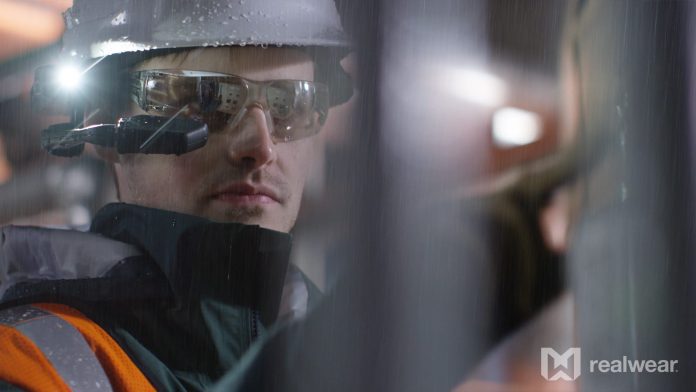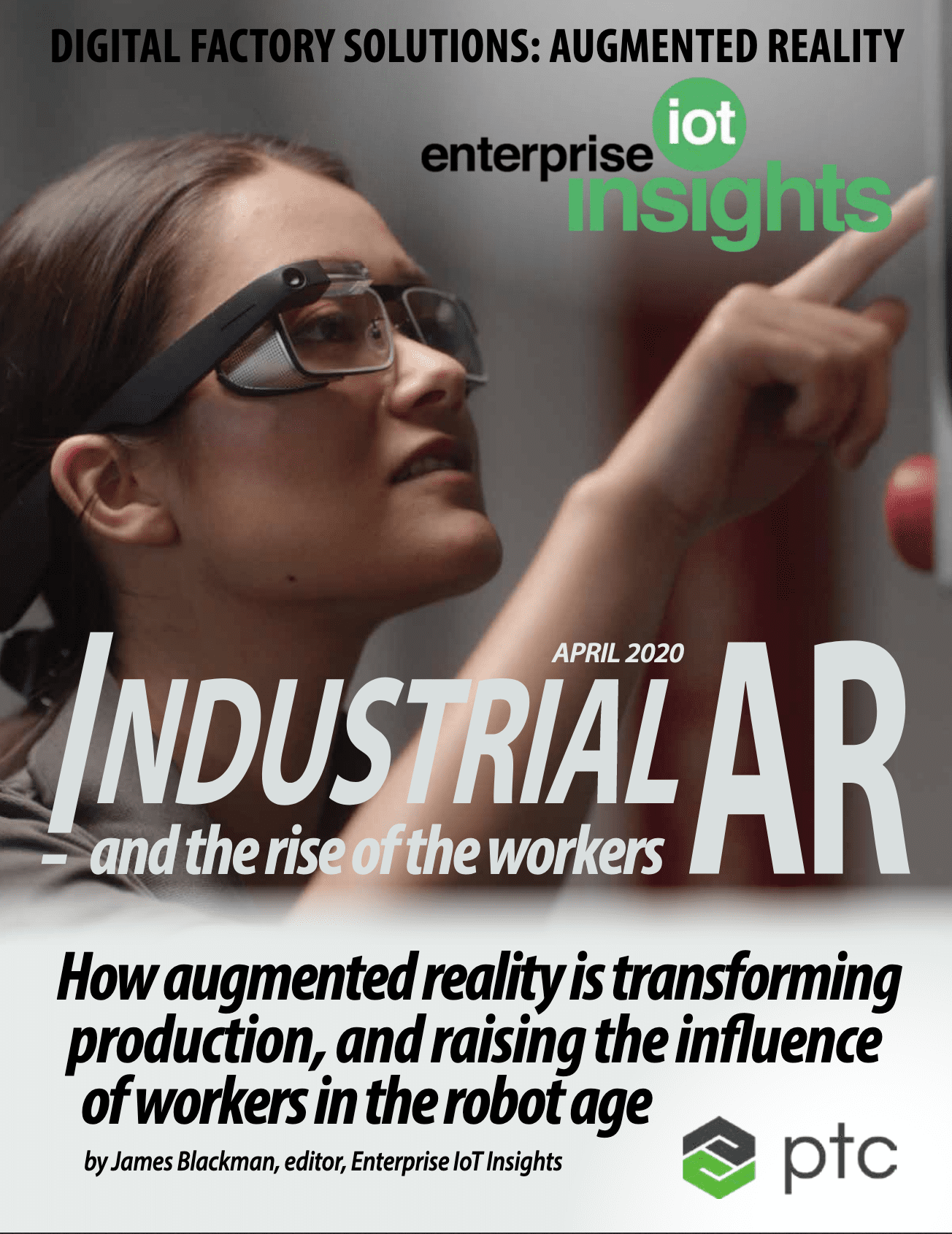Note, this article is taken from an editorial report on industrial AR, called Industrial AR – and the rise of the workers. The full report is available to download here.
Use cases for industrial AR are all variations on the theme of remote guidance. Whether the AR solution is handheld or wearable, or projected onto a surface, it seeks to guide the worker.
ASSISTANCE
Industrial AR provides a show-and-tell interface, where digital information is over-laid onto the physical world. Whether it is annotated onto a video stream by remote experts or pre-loaded onto a location-savvy playback, this information finds a natural home in the industrial space, where specialist knowledge is prized.
Its appeal is not hard to imagine – for anyone that has failed with YouTube to fix a washing machine, service a bike, or learn the guitar. The experience with AR is personalised and contextualised, locked-in to a singular reality. This is the core value proposition: guided instruction.
It follows in line with these twin concepts of sensing and sense-making, with IoT and AI respectively, to enable and compute the explosion of data. Industrial AR is just the user interface for IoT in factories. “As IoT instrumentation increases, and AI enables predictive maintenance, the next step is how the fixes are applied to the machines,” comments Ian Hughes at 451 Research.
AR works like a palliative balm for industry, against the headache of downtime. It holds special appeal for any business utilising complex systems and machinery – and for any manager charged with their profitability and any worker charged with their care. The more intricate and varied the work, the more advantage it brings.
In manufacturing, such tasks are becoming “more complex, more customised,” says Marc Schuetz, vice president of AR product management at PTC. “AR helps with everything you don’t want to automate.” The point is robots are great at repetitive tasks, but require hand-holding for more intricate and varied endeavours.
Remote assistance apps enable two-way video calls to be annotated, to allow remote experts to guide on-site workers. “It is like you’re writing on the camera stream,” says Schuetz, of PTC’s Vuforia Chalk solution. It sounds rather like FaceTime with ‘chalk’ marks, except it brings industrial context, and the scrawls can be stored and reused.
A variant of remote assistance – which is, actually, the official term the industry gives to live video annotation – is step-by-step guidance, which is sometimes combined and sometimes separate. This kind of pre-meditated instructional AR, commonly used in maintenance scenarios, requires creation of new digital content.
TRAINING
By extension, pre-loaded AR also lends itself to training, enabling enterprises to guide both new joiners and old timers through visualised work steps. Its success as a training tools means new staff can set to work almost immediately. It is used to knowledge alive within organisations, as well.
The baby-boomer generation – the last cohort to enter the workplace when ‘heavy’ industry still looked untouchable in the West, just before the computer age, and way before the digital era – is exiting stage-left with all the best lines. Hughes at 451 Research calls it “the great crew change”.
The show will struggle on as effectively if long-practised roles are re- placed and hard-won knowledge is lost. “All of it is stuck inside people, rather than on tap for everyone to access,” says Mark Sage, executive director at the AR Enterprise Alliance (AREA). The smart thing is to store the know-how in AR before it is too late. “Once you have that content, there is a boat-load you can do with it,” he adds.
Qualcomm, which supplies the chips in connected machines of all stripes, suggests “some of the greatest potential” for industrial AR comes with the ability to train staff, both new joiners and old timers – “especially in manufacturing,” says Brian Vogelsang, senior director of XR product management at Qualcomm.
He gives the example of a seasonal workforce, drafted in to support ramp-up of manufacturing in peak periods. “It could speed up the on-boarding enabling inter- active training and higher engagement,” he comments. Companies would not even be required to staff the sessions, he says, at close quarters at least.
“Realistic training scenarios that would otherwise be expensive or dangerous can be simulated, and training can be run on-demand without the need for an instructor on-site”.
COMPLIANCE
The concept of step-by-step instruction is being exploded backwards, as well, for purposes of compliance. AR tools afford a way for manufacturers to record production against a set of visual guides, by locking-in to the live assembly and comparing with pre-authored digital models.
A digital record is created, searchable by work-related metrics: time and date, job number, part number, production line, production type. It beats rubber stamps and paper trails for signing-off work orders and searching-through production jobs, says Sage.
He raises the example of aircraft manufacturing. “It takes the step-by-step piece and records progress against it. So if there is a horror story, and an aircraft goes down, the manufacturer can trace back to when it was built, and what was done. The ROI on that is quite comprehensive.”
PTC points to the application of AR for compliance in setup-and-change procedures in production of consumer packaged goods and pharmaceuticals, where production lines switch between products and risk cross-contamination. “Anything that has any kind of health concern or liability; anything that is highly regulated,” says Schuetz.
Check out the editorial report from Enterprise IoT Insights on industrial AR, called Industrial AR – and the rise of the workers. The full report is available to download here.


